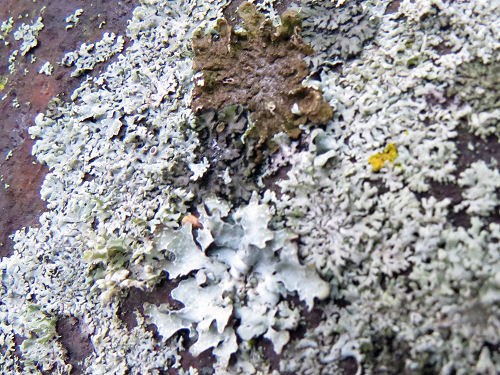This isn't going to be too informative. It's just one more step in my quest to explore lichens. I took two steps outside my front door and snapped a couple of pictures. This is lichen growing on a rusted metal wheel I have for decoration.

Lichens can grow on most any sort of substrate because they don't draw any nutrients from it, whether it's on bark, soil, decaying wood, rock, or metal. Some don't even require a substrate, but are carried by the wind.

That said, they may chemically alter the substrate. That is particularly true on minerals.
I can't really identify the kind(s) of lichen here, but I do see the apothecia.

The yellow rosettes may be easier. Best guess is Xanthoria elegans.

There's also a flabbier thallose kind just a few inches away.

Lichens can take metals (and other minerals) into their bodies and chelate them. This is a type of chemical bond that metals form where they are highly sequestered. The metal is surrounded by another molecule and held with multiple bonds. In fact, lichens have even been used experimentally to remove heavy metals from contaminated soils.
Thus, although they don't need nutrients from the substrate they can break surfaces down and weather them. Thus, if you want to create soil from rock, they are good. If you don't want a nice monument or building damaged, they are bad.
I need to find a beginners course on lichens, with a lab segment.
 | See Lichen- Not Even 101 |
| if you like this blog, click the +1 | |
1 comment:
You make this very interesting. Love the photos.
Post a Comment